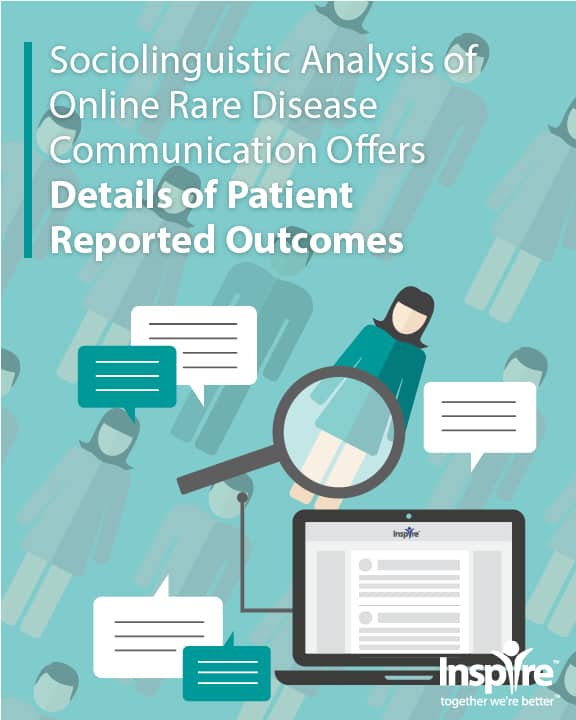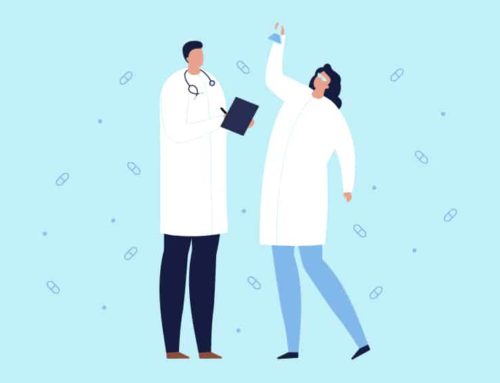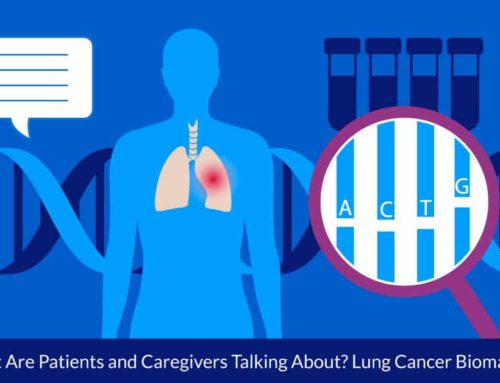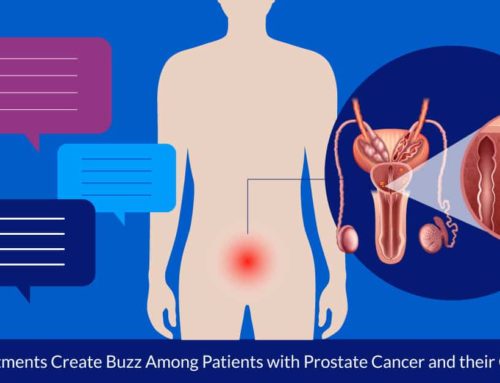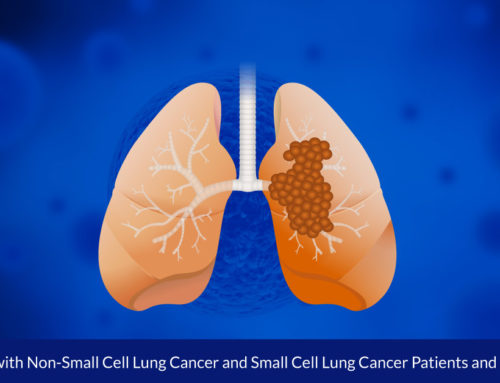Clinical Trials and PROs: What Patients with Rare Diseases Say

Challenges to developing clinical trials for rare diseases begin with their rarity – each condition affects fewer than 200,000 Americans. Approximately seventy-five percent of those affected by rare diseases are children. It is estimated that 80 percent of rare diseases are caused by genetic changes. Many rare diseases are progressive and debilitating. One third of the children affected by these conditions do not reach 5 years of age.1
Getting to a rare disease diagnosis can take years. In a way, it is understandable. Not many local physicians can say that they have actually seen a patient with one of the over 7000 rare diseases during their education or in their daily practices.
Not knowing what to look for, what are the characteristics of rare conditions, adds to medical uncertainty. The natural histories of many rare conditions – how the conditions manifest and progress over time, especially from the patients’ experience – have not been mapped out.
These challenges affect the development of clinical trials for rare diseases. People without diagnoses cannot participate in clinical trials and without an understanding of the natural history of a disease, it is difficult to determine meaningful endpoints and to collect the right data. A member exchange on Inspire points to these issues for patients diagnosed with Charcot-Marie-Tooth (CMT):
“We speak about it [CTM] as one disease, but when treatments are designed, it is clear that CMT encompasses many diseases…while there are the same peripheral neuropathy symptoms in all of us, we respond to…medications, whether prescription or OTC differently.”
In reply another member answers,
“This is an exceptional point. The cause of CMT2 is significantly different from CMT1, for instance…when CMT was under the auspices of muscular dystrophy, the issue…was even worse. Muscular dystrophy and CMT have similarities as far as muscle loss…but the similarities kinda stop there. What helps patients with MD is not always what helps patients with CMT.
To compound the problem, as doctors have become increasingly aware of CMT (an overall good trend) more diagnosis’ have been made on basic physical assessments or nerve conduction velocity studies alone. Patients are then told “You have CMT.” Rarely have I found that these patients, who now have a “formal” diagnosis, have been informed of their sub-type or are even made aware of the existence of different CMT genetic sub-types. Then, they come here saying they have CMT and looking for answers. They might have CMT4 and are getting answers from people with a CMT1 perspective!”
Clearly, the fact that there is a gap in the number of specialists in the field of medical genetics may be hindering effective diagnoses as well. 2
These clinical endpoints, being able to demonstrate clinical benefit – defined as how a patient feels, functions, or survives – requires listening to patients. In a recent interview, Nick Kenny of Syneo Health stated,
“Investment groups now are insisting that for people who are bringing them science in the rare disease space, if they have not already engaged with patients or patient advocates to truly understand the disease from the patient perspective not just the clinical respective…then they are probably not going to entertain funding that drug.”3
For rare disease patients clinical trials mean hope. As a member with Hermansky-Pudlak Syndrome- a rare genetic disorder involving albinism, bleeding disorder, colitis, pulmonary fibrosis and a shortened life expectancy, describes,
“our doctors at NIH announced two new clinical trials – one for the GI problems of HPS, and one for end-stage lung disease associated with HPS.
I’m thrilled. I feel so blessed that although we’re super rare (we think about 1,500 known cases globally now) … that after so many years of work, our research is moving forward and may actually offer some of us with HPS some actual treatment options. I can’t even begin to explain how exciting that is after years of living in the reality that there was NOTHING out there for us. There are still so many unmet needs. We STILL have a long way to go – but it’s nice to feel as though there’s some movement forward”
Yet patients with rare diseases also face the challenge of being able to assess, either on their own or with their physician, the right clinical trials for them. One rare disease patient asked,
“I have the opportunity to join a clinical trial for a systemic mastocytosis drug… People in the medical profession urge me to join. Friends and family mostly discourage me… Has anyone participated in a trial? How did you finally decide to do it, or not?”
And once the decision is made, other barriers arise, like distance to the clinical trial. A member described his travels to a clinical trial for his rare cancer.
“From Las Vegas to Providence RI, then drive about an hour to Worcester, MA, where the clinic and medical center are. Traffic in boston is horrible so I fly into Providence, much better traffic. The flight takes two planes I fly Southwest because I save about $200/trip. I got a hotel through the Cancer society for $19/night, this really helps… I flight to Worcester the night before infusion, get the infusion the next day, then leave with the IV Chemo pump the next day. Once the pump starts alarming, I disconnect. after 12 days I return with the pump and do it all again. Next Tuesday I fly out for my 3rd infusion.”
Another challenge of clinical trial design is the placebo. Many question the ethics of having a placebo arm in rare disease clinical trials. An Inspire member with a rare disorder that causes blindness describes her feelings of not knowing if she received a placebo or not.
“I underwent surgery in November with the hopes of getting an implant that has CNTF (cilary neurotroptic factor).in other words cells that may have…some effect on our disease. Unfortunately as part of the study I don’t know whether I got the implant or a placebo. I have to wait two years to find out. I have to go every couple months to follow up and I will keep you all notified of any information I get. I am so depressed over this.”
The use of natural histories as control data in lieu of randomized placebo-controlled trials is an answer when dealing with rare diseases with catastrophic outcomes.4
Social media has provided a means of connecting patients who have been separated by distance and rarity. Online they discuss treatment options, clinical trials and try to support each other through their rare conditions. Today we share a case study documenting the patient reported outcomes from multiple treatments and unmet needs of patients with a rare disease obtained through anonymized sociolinguistic analysis.
Inspire offers a trusted community to patients and caregivers. Our goal with this blog, this website and our content is to provide the life science industry access to the true, authentic patient voice. In so doing, we support faithful operationalization of patient-centricity. Take a look at our case studies, eBooks and news outlet coverage.
References
1Benjamin K, Vernon M, Patrick DL. et. al. (2017). Patient-reported outcome and observer-reported outcome assessment in rare disease clinical trials: an ISPOR COA emerging good practices task force report. Value Health;20:838–55. https://www.valueinhealthjournal.com/article/S1098-3015(17)30264-4/fulltext
2https://checkrare.com/challenges-facing-rare-disease-clinical-trials/
3https://youtu.be/nLVM2m5rIog
4Mulberg, A. et.al. (2019). Regulatory strategies for rare diseases under current global regulatory statutes: a discussion with stakeholders. Orphanet Journal of Rare Diseases, 14(36). https://ojrd.biomedcentral.com/articles/10.1186/s13023-019-1017-5

